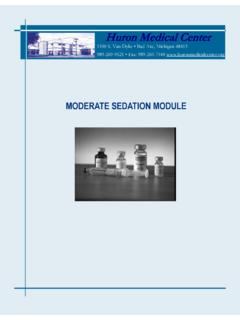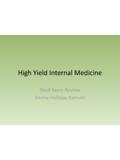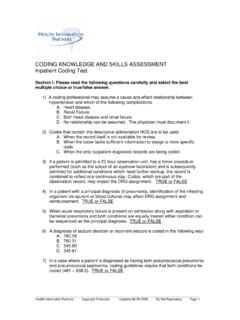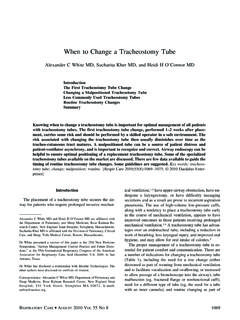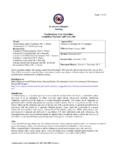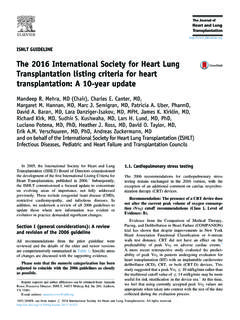Transcription of AVAPS guide - Saegeling Medizintechnik
1 AVAPSA verage Volume Assured Pressure SupportAVAPS guide The right pressure at the right time for more patient comfort and more efficient ventilation 2011 Koninklijke Philips Electronics All rights are Healthcare reserves the right to make changes in specifications and/or to discontinue any product at any time without notice or obligation and will not be liable for any consequences resulting from the use of this AE 5/17/11 MCI 4103857 PN 1081265 Please visit referenceAuto-TRAK algorithm Performance Characteristics of 10 Home Mechanical Ventilators in Pressure-Support Mode Chest 2005, Battisti and Co Noninvasive Ventilator Triggering in Chronic Obstructive Pulmonary Disease AJRCCM 2001, Stell and Co Performance Characteristics of Bilevel Pressure Ventilators Chest 1997, Bunburaphong and CoAVAPS support function Average volume assured pressure support in obesity hypoventilation.
2 A randomized cross-over trial Chest 2006, Storre and CoAVAPS, a unique clinically proven technology For patients with Obesity Hypoventilation Syndrome The addition of AVAPS to BPV-S/T provides beneficial physiologic improvements, resulting in a more efficient decrease of PtcCO2 compared to BPV-S/T therapy alone. Average Volume Assured Pressure Support in Obesity Hypoventilation: a Randomized Cross-Over Trial. Storre, et al. Chest 2006. For patients with chest deformities After switching to BiPAP- AVAPS therapy, the results included an increase in average oxygen saturation, a reduction of pCO2 levels and an improved acceptance of therapy compared to previously used ventilation methods.
3 Average Volume Assured Pressure Support ( AVAPS ) for Pressure-Controlled ventilation (BiPAP Therapy). Kerl, et al. Poster presented at the German National Home Mechanical Congress, 2004. For patients with hypercapnic COPD AVAPS mask ventilation has similar efficacy and produces better subjective effects on sleep as compared with PS in COPD patients with chronic hypercapnia. A pilot study on efficacy of nocturnal AVAPS mask ventilation in patients with hypercapnic COPD. Crisafulli, et al. Poster presented at the ATS congress, Healthcare is part of Royal Philips ElectronicsHow to reach 7031 463 2254 Europe, Middle East, Africa+49 7031 463 2254 Latin America+55 11 2125 0744 North America+1 425 487 7000800 285 5585 (toll free, US only)Philips Respironics1010 Murry Ridge LaneMurrysville, PA 15668 Customer Service+1 724 387 4000800 345 6443 (toll free, US only)
4 Philips Respironics International Headquarters+33 1 47 28 30 82 Philips Respironics Asia Pacific+65 6882 5282 Philips Respironics Australia+61 (2) 9666 4444 Philips Respironics China+86 800 820 6665+86 400 820 6665 Philips Respironics Deutschland+49 8152 93 06 0 Philips Respironics France+33 2 51 89 36 00 Philips Respironics Italy+39 039 203 1 Philips Respironics Sweden+46 8 120 45 900 Philips Respironics Switzerland+41 6 27 45 17 50 Philips Respironics United Kingdom+44 800 1300 845 , Synchrony, BiPAP, Auto-TRAK are trademarks of Respironics, Inc.
5 And its affiliates .All rights are is AVAPS ? AVAPS is a support function that can be activated within our s, s /T, PC and T pressure modes. It automatically adapts pressure support to patient needs to guarantee an average tidal volume. Based on the auto-TRaK algorithm performance, the patient's tidal volume is estimated at each breath and compared with the target tidal volume. Inspiratory pressure increases or decreases from breath to breath to ensure the preset tidal volume. Inspiratory pressure smoothly changes (<1cmH2O/min) so as not to affect patient comfor t, and to prevent any potential patient-ventilator case the patient tidal volume is far from the set target vt an accelarating factor will allow the inspiratory pressure to change faster by up to 3 cmH2 patient arterial blood gases (PaCO2 and PaO2) and oxygen saturation (SpO2)* Conversion table to set the target tidal volume in relation to the ideal weight.
6 HeightCalculated ideal weight (if BMI = 23)Target Vte if 8 ml/kgTarget Vte if 10 kg410 ml520 kg440 ml550 kg470 ml590 kg500 ml620 kg530 ml660 kg560 ml700 kg600 ml740 kg630 ml780 kg660 ml830 mlabove data have been calculated with an ideal Body Mass Index of 23 kg/m (BMI=weight/height2)Which patients ? Obese hypoventilation patients : To compensate for changes in body position; averaged tidal volume ensured COPD patients : To achieve a combination of ventilation comfort and efficiency with no compromise.
7 Get both benefits by applying the right pressure at the right time Restrictive patients : To provide the comfort and leak compensation of a pressure mode, and the safety of a guaranteed volumeWhich benefits? Make titration process easier, no IPAP adjustment needed Follow disease progression as patient's ventilatory needs change Improve patient s ventilation efficacy and comfort Increase safety by guaranteeing an averaged tidal volume2. Set IPAP LimitsIPAP max = 25 to 50 cmH2O depending on patient condition and maximum pressure available on the machineIPAP min = EPAP + 4 cmH2O depending on patient condition1.
8 Set the Target Tidal VolumeTo 8ml/kg of the ideal weight and adjust depending on patient pathologyAVAPS SettingsandavaPs suggested settingsEstimation of the exhaled tidal volume (vte)Digital Auto-TRAK algorithm combined with the BiPAP system is able to quickly identify the leak by comparing the original baseline flow to the new baseline flow. Differences are recognized as leaks, and adjusted for, algorithm estimates patient flow to provide: Automatic triggers: sensitivity remains optimal even with a change in leaks and patient s respiratory mechanics An estimation of exhaled patient tidal volume (Vte) for ventilation monitoring and for AVAPS .
9 Based on Auto-TRAK advanced technology, AVAPS ensures a close monitoring of Vte and adjusts IPAP to maintain a true averaged patient tidal is AVAPS ? AVAPS is a support function that can be activated within our s, s /T, PC and T pressure modes. It automatically adapts pressure support to patient needs to guarantee an average tidal volume. Based on the auto-TRaK algorithm performance, the patient's tidal volume is estimated at each breath and compared with the target tidal volume. Inspiratory pressure increases or decreases from breath to breath to ensure the preset tidal volume.
10 Inspiratory pressure smoothly changes (<1cmH2O/min) so as not to affect patient comfor t, and to prevent any potential patient-ventilator case the patient tidal volume is far from the set target vt an accelarating factor will allow the inspiratory pressure to change faster by up to 3 cmH2 patient arterial blood gases (PaCO2 and PaO2) and oxygen saturation (SpO2)* Conversion table to set the target tidal volume in relation to the ideal weight:HeightCalculated ideal weight (if BMI = 23)Target Vte if 8 ml/kgTarget Vte if 10 kg410 ml520 kg440 ml550 kg470 ml590 kg500 ml620 kg530 ml660 kg560 ml700 kg600 ml740 kg630 ml780 kg660 ml830 mlabove data have been calculated with an ideal Body Mass Index of 23 kg/m (BMI=weight/height2)Which patients ?


